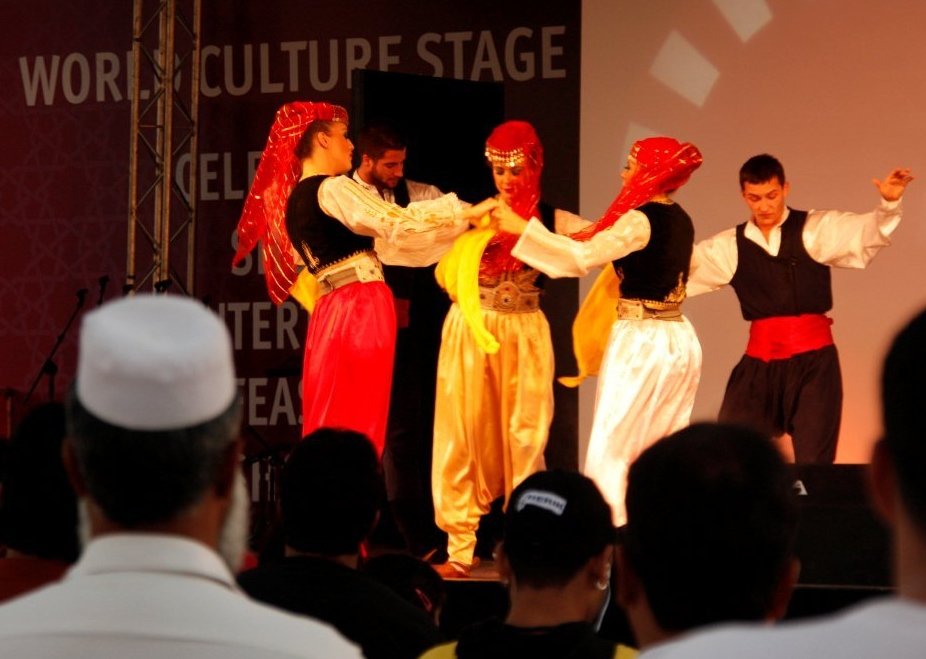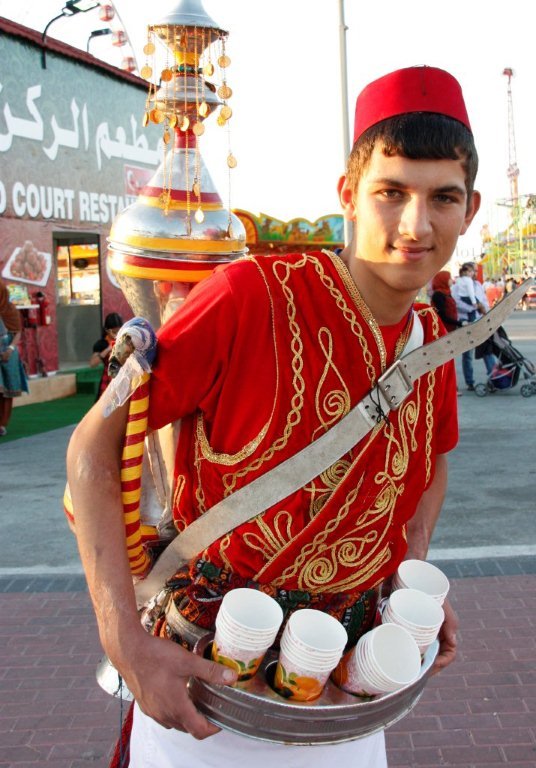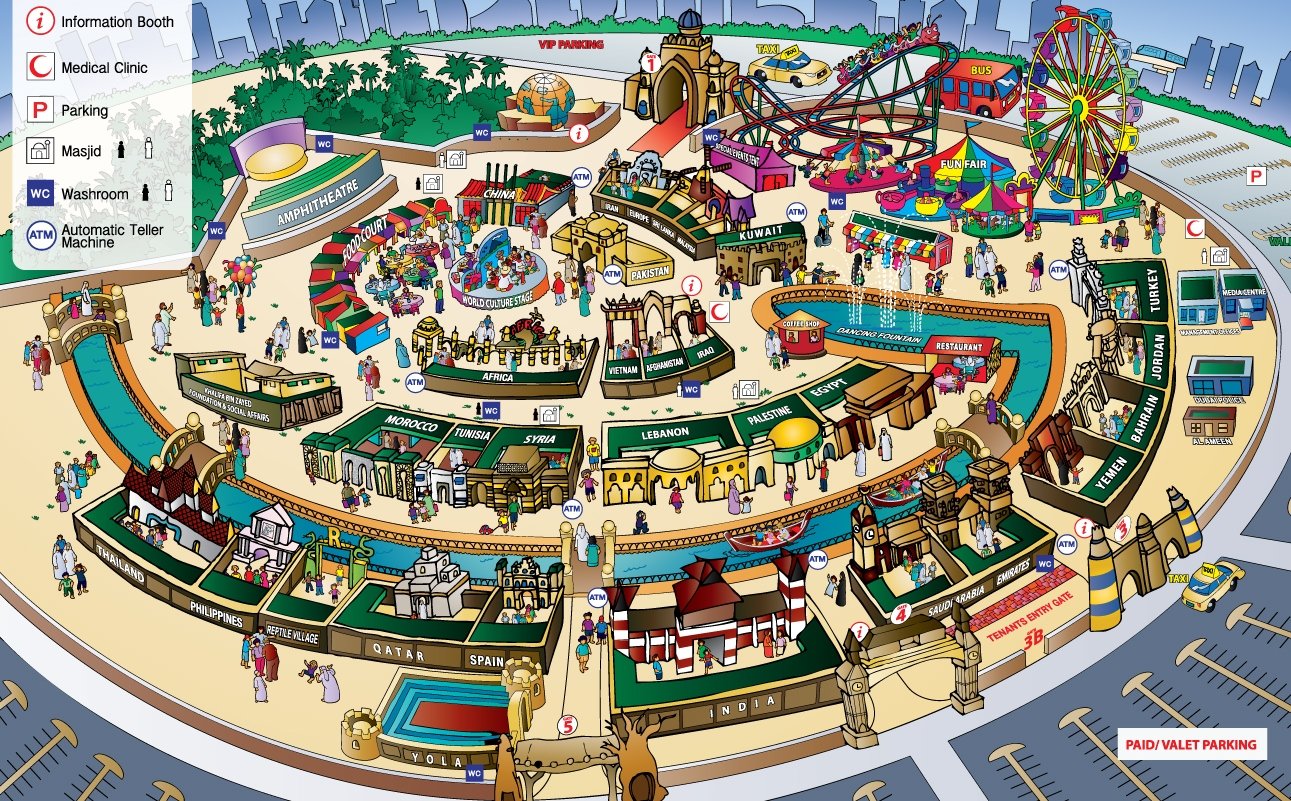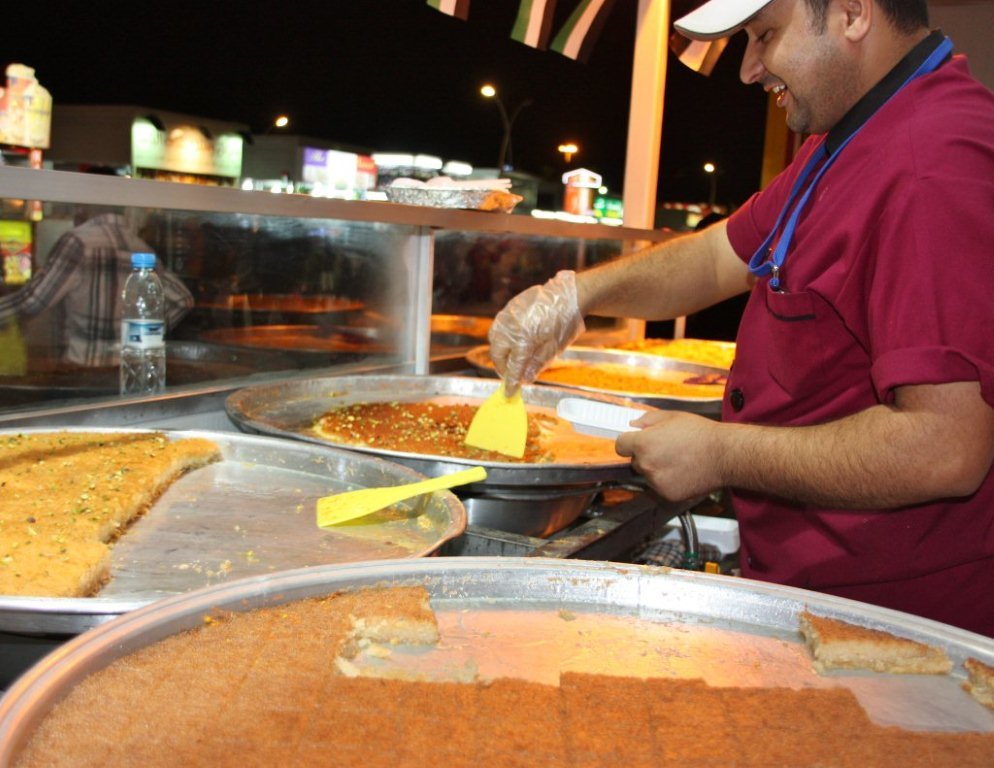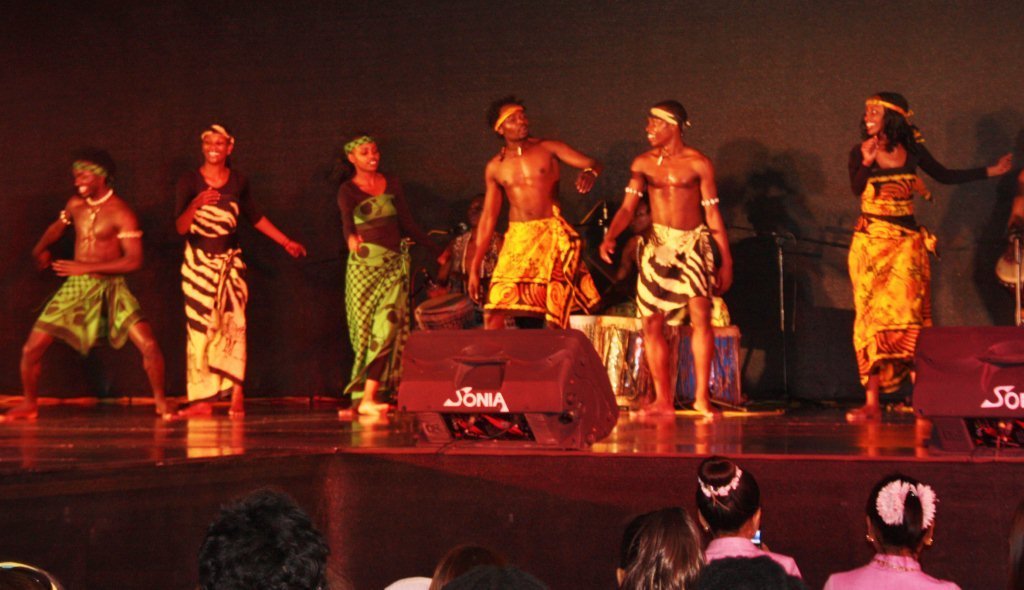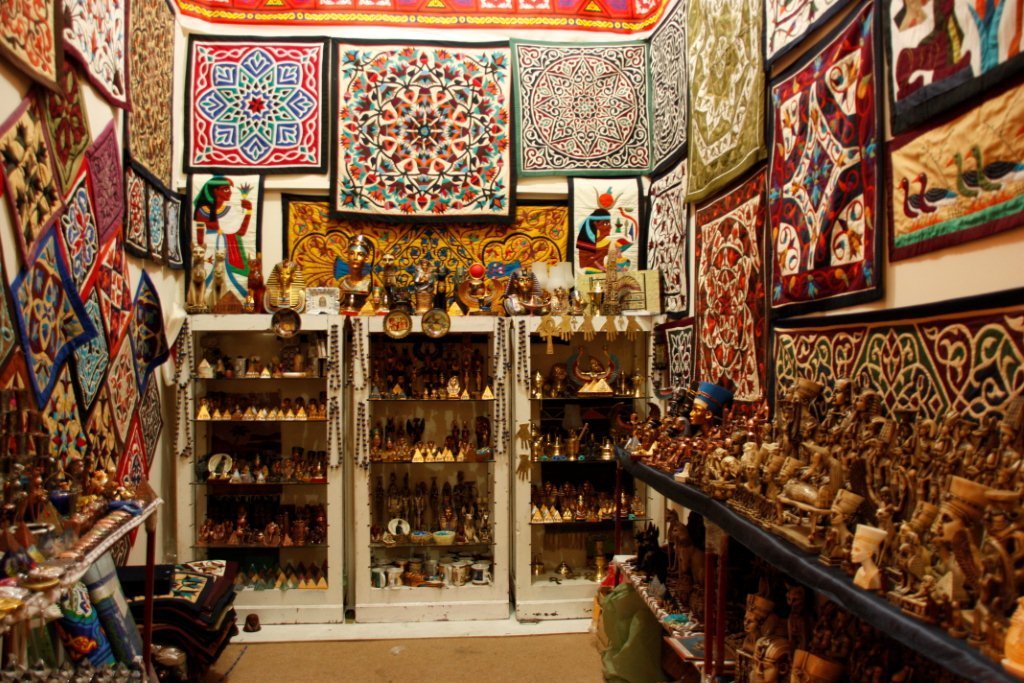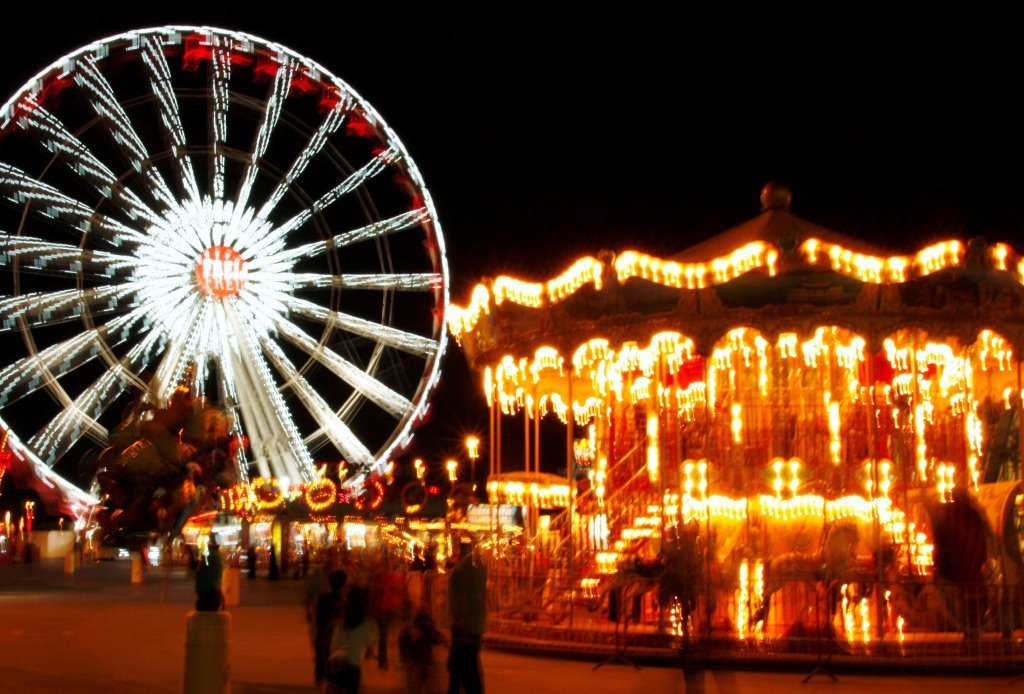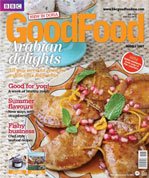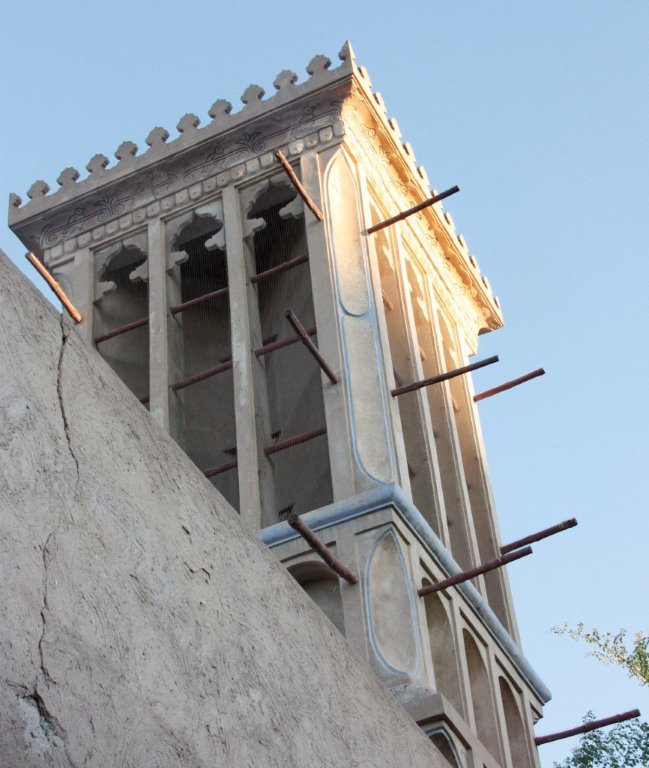 When a friend invited me to join her on a visit to an art gallery in the Al Bastakia Quarter of Dubai, I readily accepted. She told me we would see an exhibit of photographs of Dubai by an Emirati photographer. It sounded worthwhile. (I could already imagine the photos.) The extra perk was a stroll through Al Bastakia, a district I always enjoy but rarely visit.
When a friend invited me to join her on a visit to an art gallery in the Al Bastakia Quarter of Dubai, I readily accepted. She told me we would see an exhibit of photographs of Dubai by an Emirati photographer. It sounded worthwhile. (I could already imagine the photos.) The extra perk was a stroll through Al Bastakia, a district I always enjoy but rarely visit.
Al Bastakia is what I consider the real “Old Town” (not that area around Dubai Mall). The neighborhood is located near the Creek waterfront on the Bur Dubai side, not far from the Dubai Museum. Built at the turn of the century, this quarter has been declared a conservation area, and restoration work has been ongoing.
The area features a number of old, traditional wind tower houses, which were once the homes of wealthy Persian merchants. The wind towers were a traditional form of air-conditioning, whereby cool air was funneled down into the house.
To get to the gallery, we passed old-style shops like this one selling trinkets and even small antique items.

We walked through these narrow, peaceful lanes, and I could sort of imagine the life of the merchants at the turn of the century.

After nearly four minutes of walking, (the area is small) we reached the gallery: Dar Ibn Al Haytham for Visual Arts.
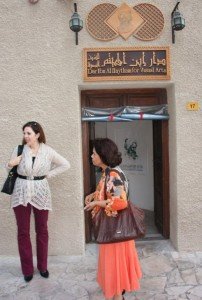
The gallery is a traditional home with a courtyard in the middle and small rooms off each side.

As I said, I already had an image in my mind of the types of photographs we would see—the usual Dubai skyline panoramas, the contrast of old versus new, plus the typical black and white photos of Sheikh Zayed Road in the 1980s, etc., etc. I had seen it all before.
Well, I was wrong, wrong, wrong.
We saw a total of five installations, all by the award-winning photographer Jassim Al Awadhi, who was there to give the six of us a guided tour. To me, Jassim is more of a mixed-media artist who manipulates and embellishes his photographs in unexpected ways.
To start, we viewed what I call the “Message in a Bottle” room. This was a whimsical display of photographs inside glass bottles. We were all fascinated by these and we got up really close to study the photos.

This bottle contains a montage of photos.

The bottle below contains a lovely photo of the Dubai Creek.

And this bottle displays a photo of Sheikh Zayed Road from what appears to be the 1980’s… I knew it!
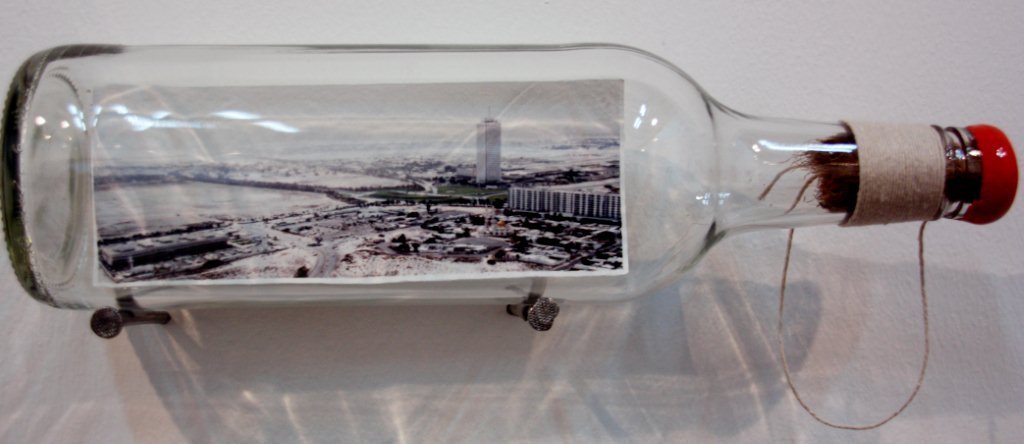
Next was the room with crumpled photos. Again, we were fascinated. 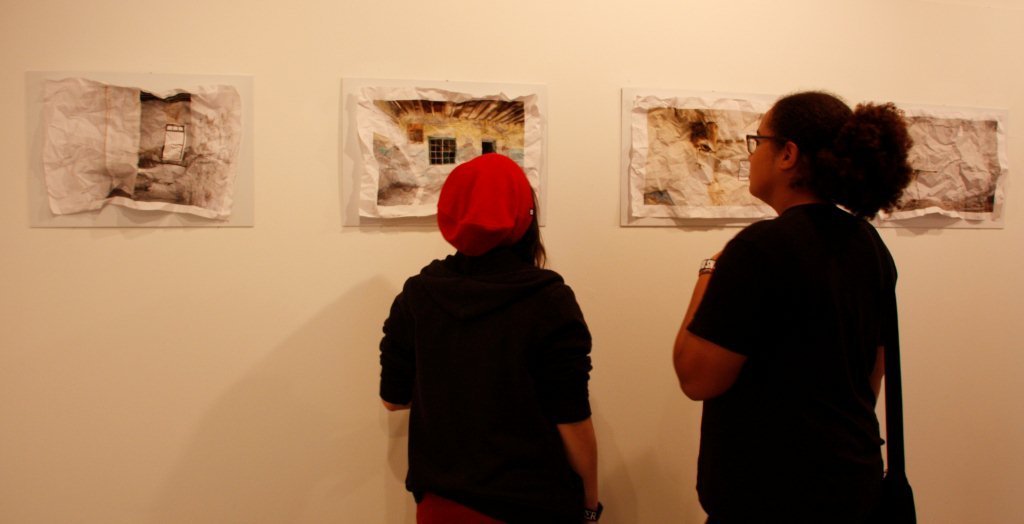
What does it mean? Someone asked. Jassim shrugged and shook his head.
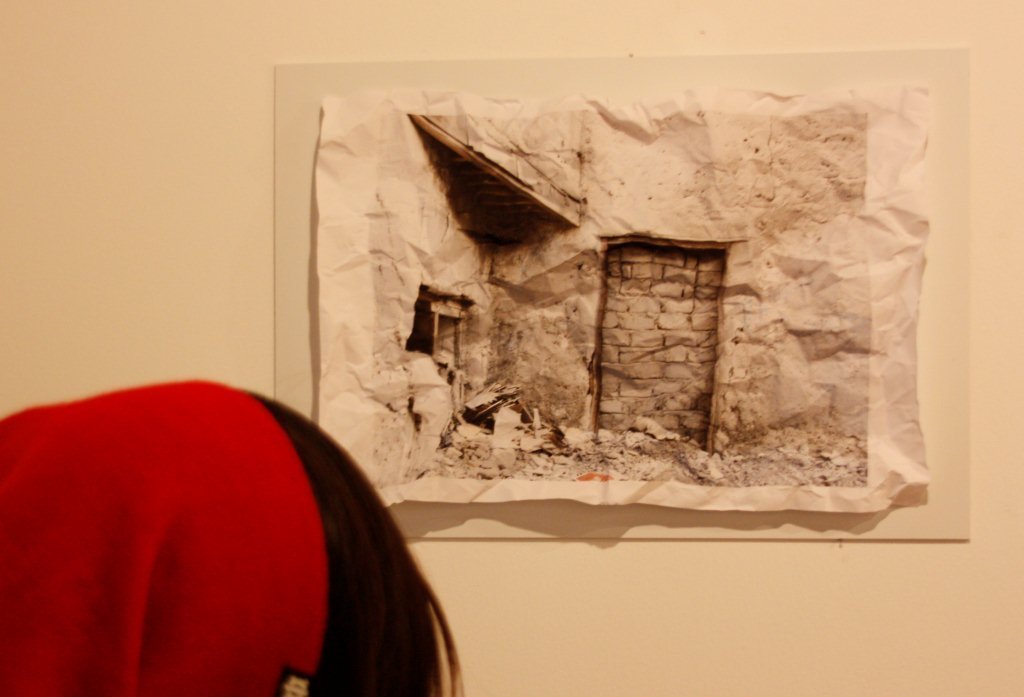
To me, the crumpled photos reminded me of a throwaway society, as though one crumples something, tosses it away, but then has a change of heart, and the object is salvaged.
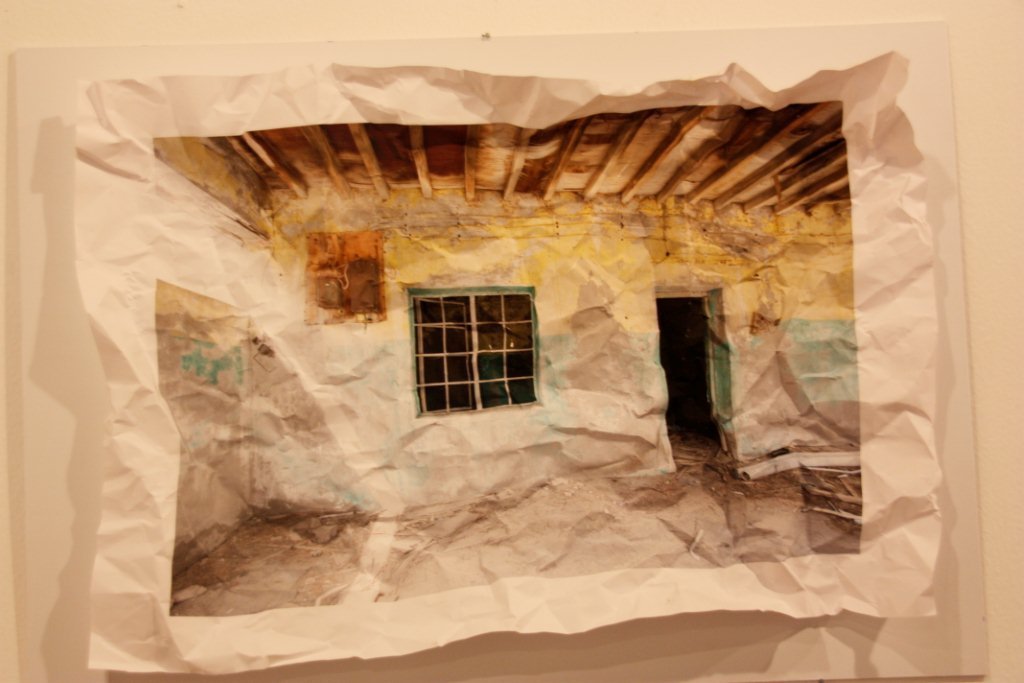
The next room contained framed photos embellished with Arabic calligraphy. Here Jassim explains the significance of fish in Emirati society as he points out the calligraphy written on the fish.
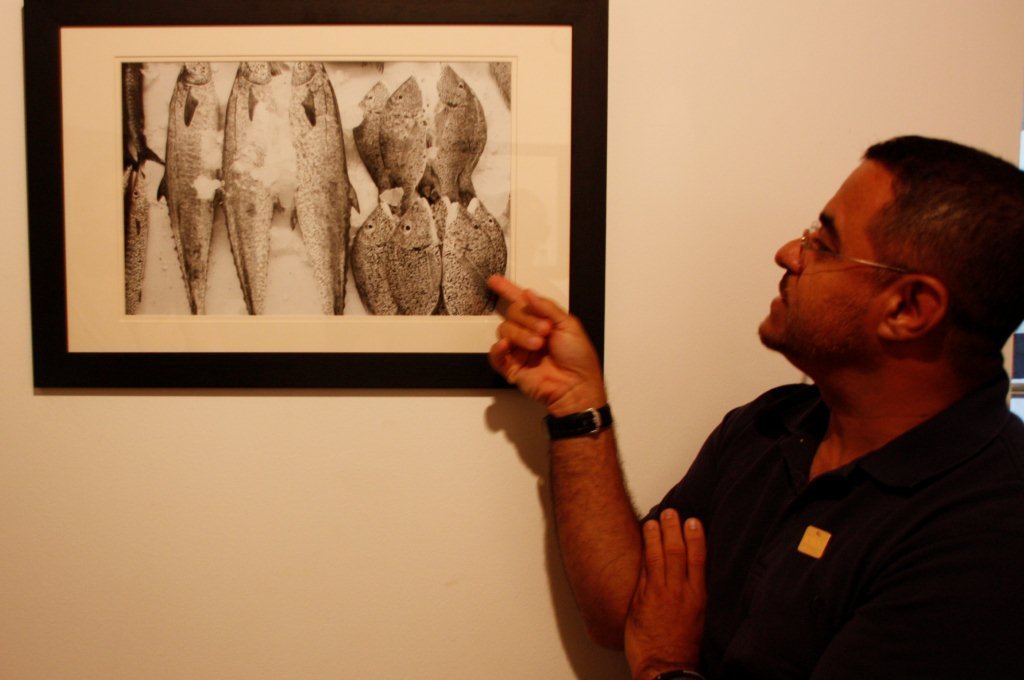
Here’s a closer view of the fish. Unfortunately, this photo is not very sharp, but you should still get an idea of the calligraphy on the fish.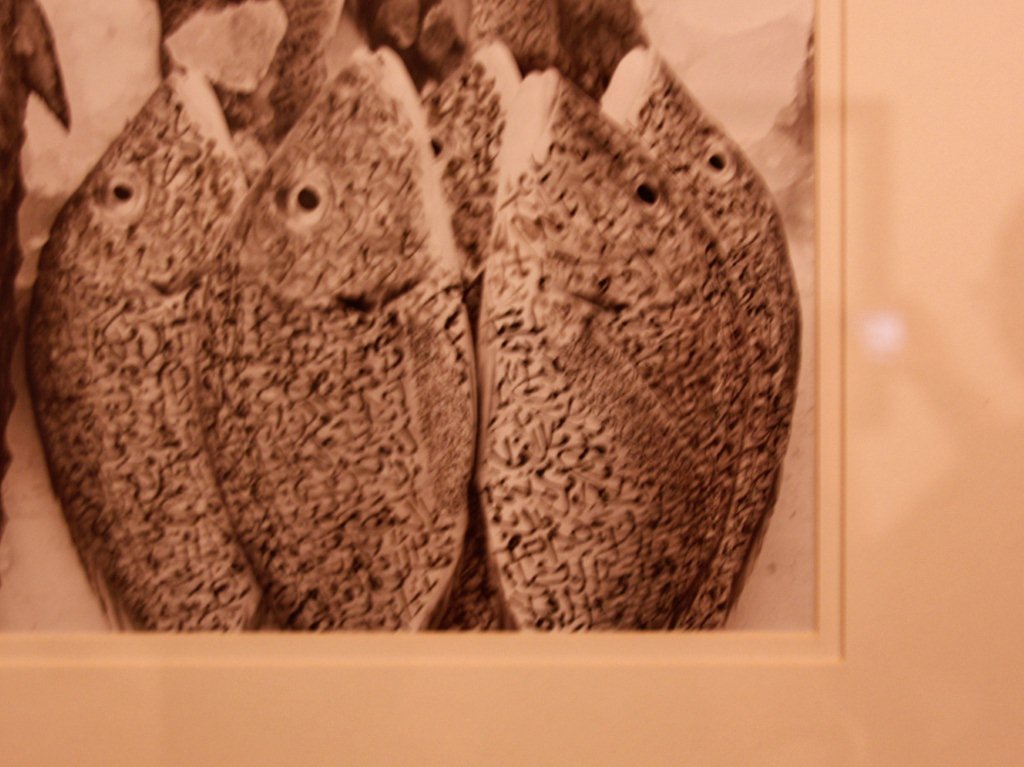
This is my favorite photograph—an exquisite image of an old, modest Arabic door, covered with small, tidy Arabic calligraphy (added to the photo by the artist). 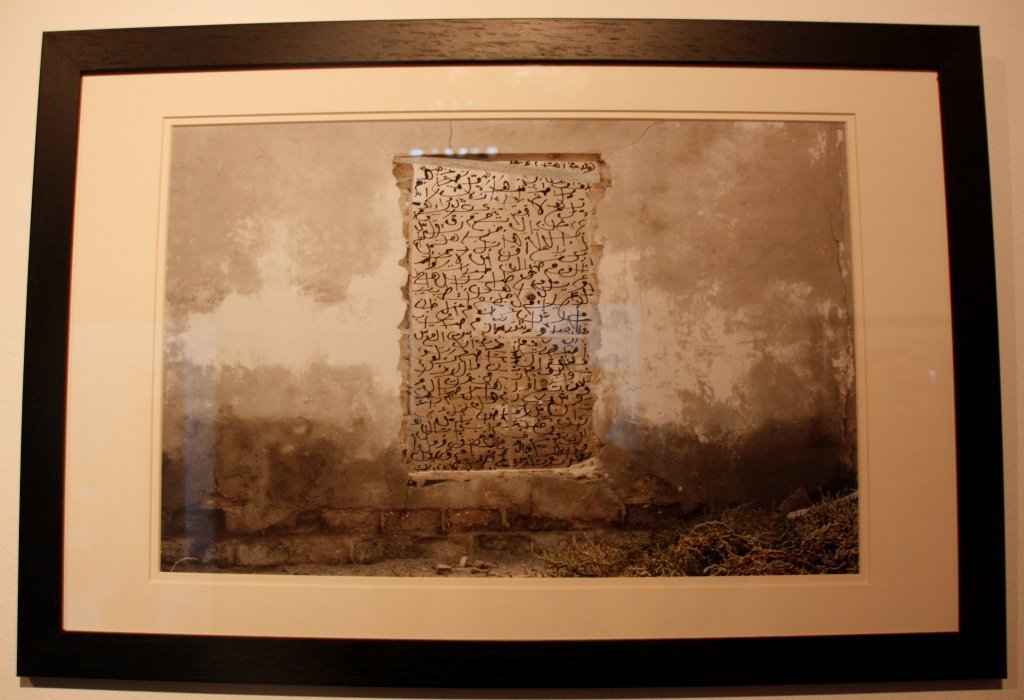
Next were the colored photographs. These were sepia-toned photos of the fruit and vegetable market and the fish souk that the artist had softly colored in.
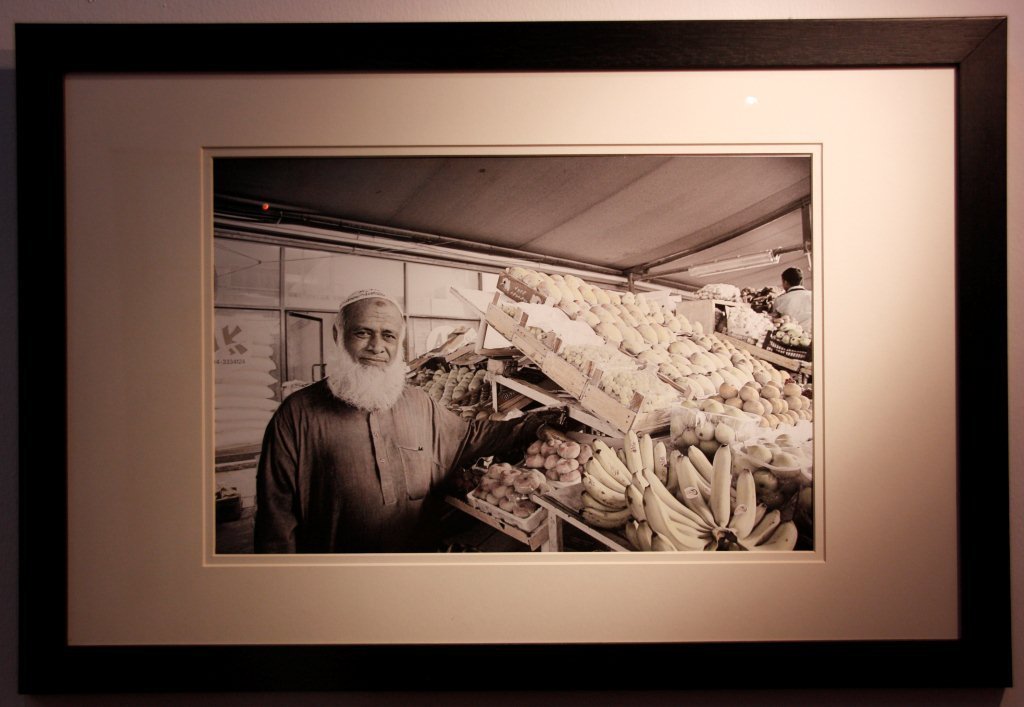
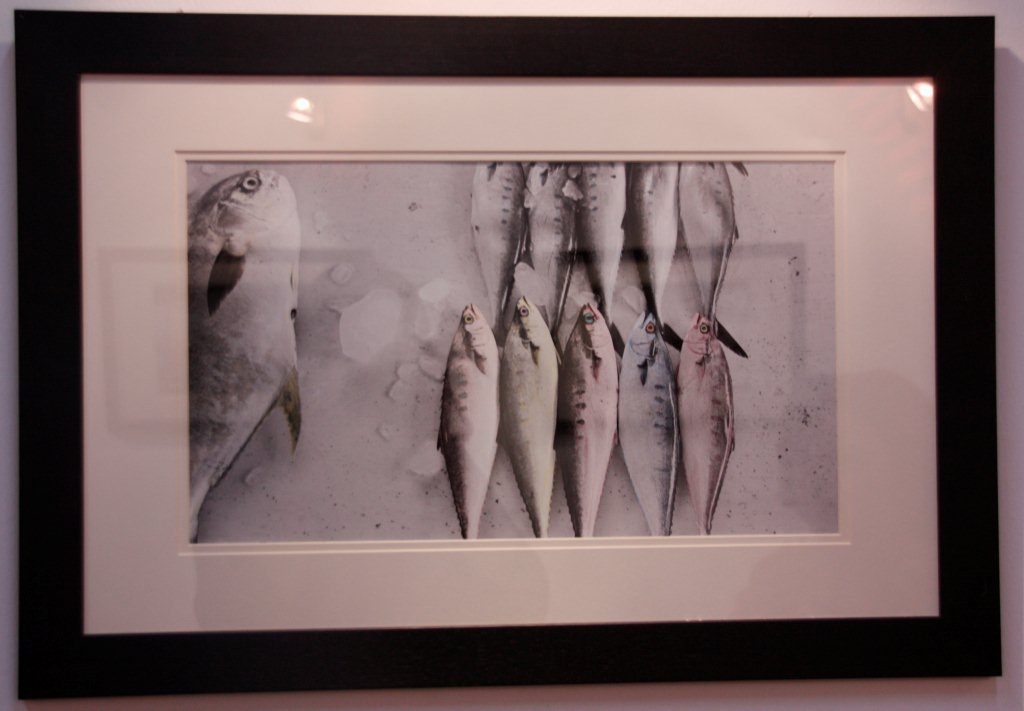
Here is a close-up of the fish. The color is subtle, but it’s there. It seems Jassim enjoys photographing fish. I was drawn to these images as well. 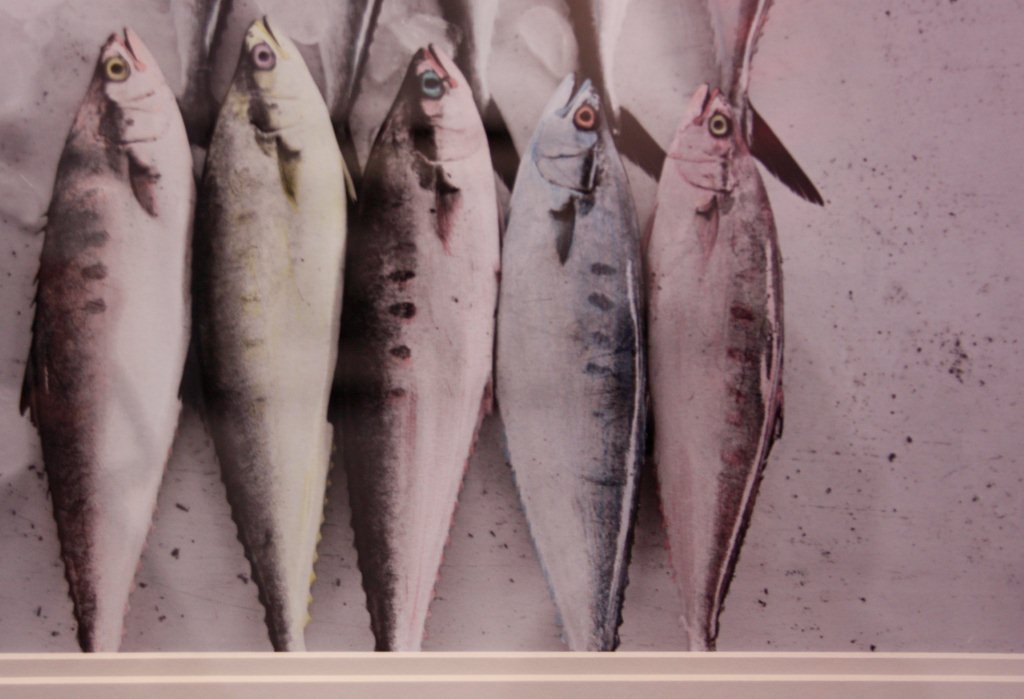
Finally, the last room—the most unexpected and challenging of all the installations. In this small room were about a dozen of these black-cloaked images, each about 6 feet tall.
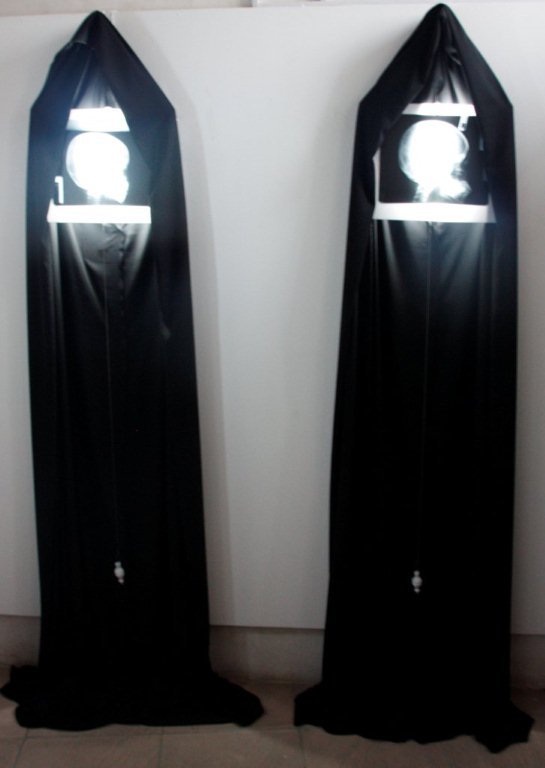
Upon closer inspection, each piece contains an x-ray image covered in some variation of Arabic letters, numbers and calligraphy. These images got us all talking, thinking and speculating. 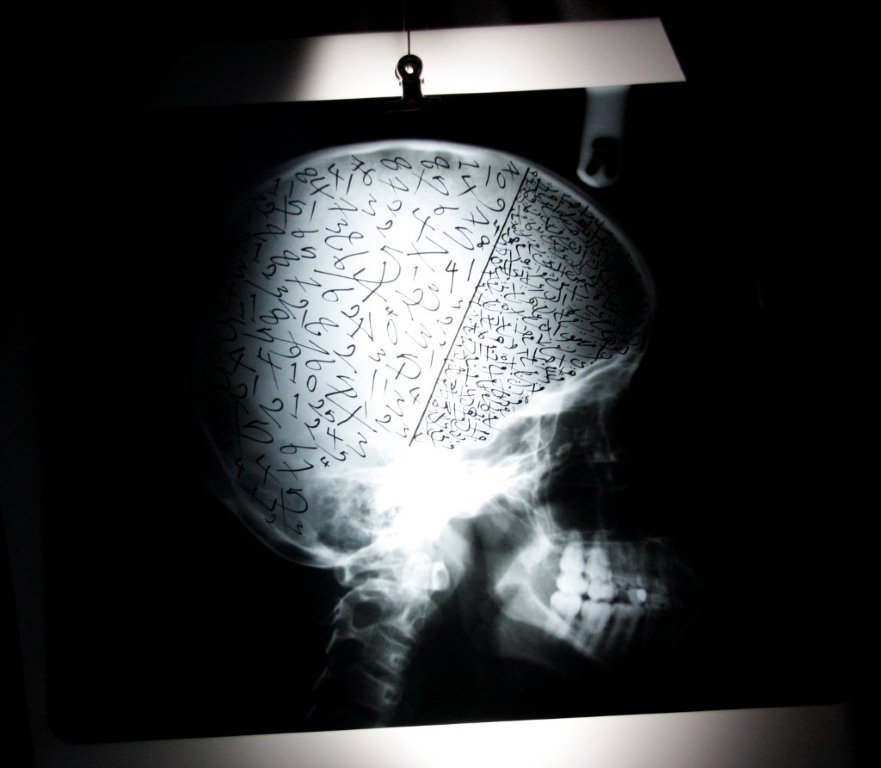
Some of us in our group made guesses as to the meaning behind these unusual pieces. Jassim just smiled and shrugged. But he did suggest that the installation had something to do with his police work, his specialty being CSI, crime scene investigation. But he wouldn’t say more.
Jassim Al Awadhi has been taking photos for over 30 years now. Most recently he has been Assistant Professor in the Photography Department of the American University of Sharjah and the Chairman and a Founding Member of the UAE Photography Club. His work has exhibited extensively in the UAE as well as Syria, Egypt, Jordan, India and Europe. He also works for Dubai Police.
The Dar Ibn Al Hayam for Visual Arts is located in Al Bastakia, house number 17. This exhibit is showing until December 20, 2011. For more information, call 04 353 5321.
Question: What are your impressions of Al Bastakia and the area around?







